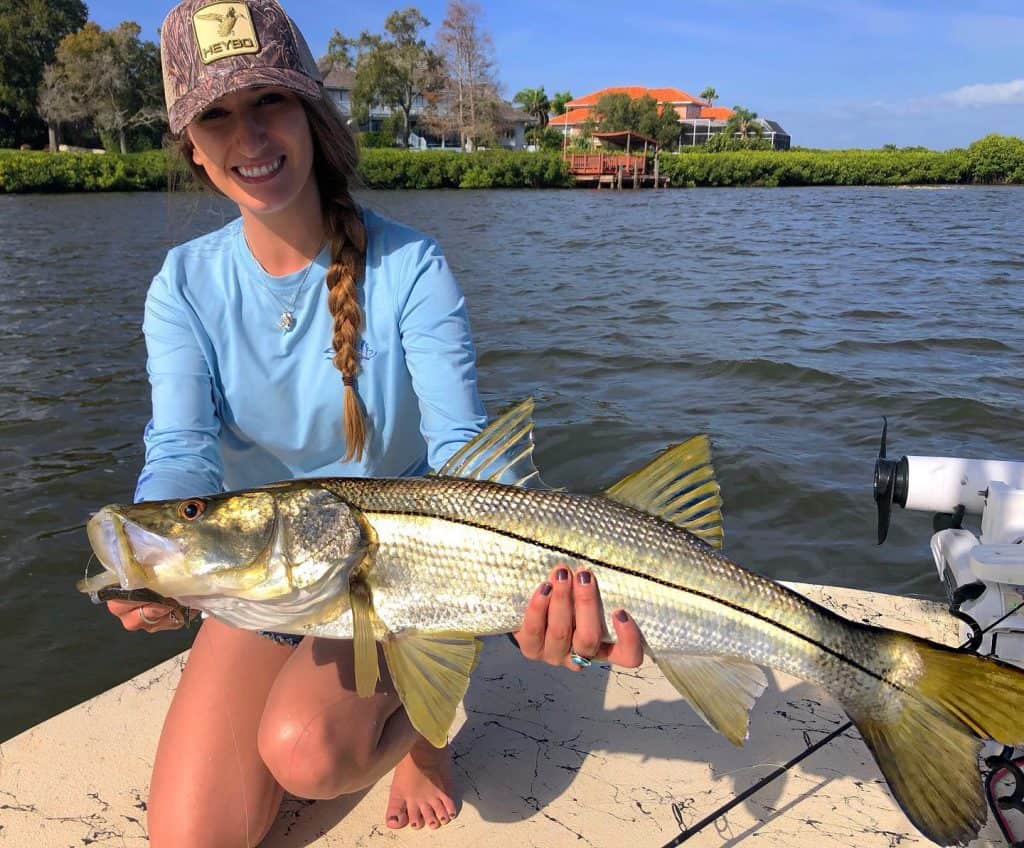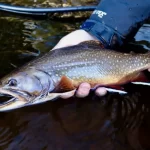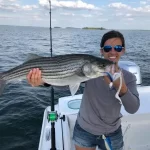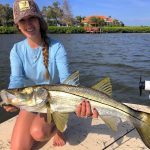11 Valuable Tampa Bay Fishing Tips
This article will feature 11 valuable Tampa Bay fishing tips. Tampa Bay is a large Bay and estuary system on the West Coast of Florida, pretty much in the center of the state. It consists of a large, open bay which still gets significant commercial traffic. It has miles of mangrove shorelines, acres of pristine grass flats, and many tributary creeks and rivers. These are combined to make Tampa Bay an outstanding fishery for a variety of species.
One of the advantages of fishing in this part of Florida is the variety that anglers can experience. Tampa Bay offers those casting artificial lures, live baits, and flies the opportunity to catch a myriad of saltwater species. These include tarpon, redfish, spotted sea trout, Spanish mackerel, bluefish, ladyfish, sharks, cobia, pompano, permit, snapper, grouper, sheepshead, flounder, drum, jack crevelle, and more.
Just as with the abundant species, anglers have a choice as to how they want to pursue their quarry. Spinning tackle is the primary choice and is most often used to cast artificial lures or live bait. Anglers can use heavier tackle to bottom fish near the shipping channel and around the Skyway Bridge. Fly anglers have many opportunities as well.
11 valuable Tampa Bay Fishing Tips

The list of 11 valuable Tampa Bay fishing tips is a guide to get anglers unfamiliar with the area or the tactics a place to get started. However, even the most seasoned angler may pick up a tip or two
1) Medium action spinning outfit is the best rod and reel choice
Number one on the list of Tampa Bay fishing spots is choosing the best rod and reel combination. For most anglers, a medium spinning outfit is the best choice. Most of the fish landed will be between 1 pound and 10 pounds. This makes a medium action spinning outfit an excellent choice which will handle virtually all of the situations that an angler fishing Tampa Bay will encounter. Of course, anglers targeting very large species such as big grouper or tarpon especially around heavy cover will have to bump up the tackle a notch or two.

A 7 foot medium action rod with a fast action is an excellent all round choice. Fast action refers to the design of the rod. It will be stout at the lower half to enable fighting a big fish while being limber at the tip to make casting lighter lures and live baits easier. A 3000 series reel spooled up with either 20 pound braided line or 10 pound monofilament line completes the rig. Below is a quality Penn Conflict combo at a reasonable price.
Click to shop Amazon for a Penn Conflict combo
“Fishing Lido Key is a participant in the Amazon Associates Program, an affiliate advertising program designed to provide a means for sites to earn advertising fees by advertising and linking to Amazon. As an Amazon Associate I earn from qualifying purchases. ”
2) Chumming with live bait is extremely effective in Tampa Bay
Tampa Bay has become a bit of a live bait fishery. This is especially true in the warmer months. Many guides as well as experienced recreational anglers use a technique called “live bait chumming”. This is an incredibly effective technique that produces a lot a fish and is easy for even the novice angler to succeed with. It is a bit complicated and require some special gear, but the efforts are worth it.

In the warmer months, the flats are inundated with millions of small a bait fish. These are locally called white bait or shiners. For the most part, they include scaled sardines, threadfin herring, and Spanish sardines. Large rounded live wells with high-volume pumps are required to keep the bait alive.
Using a cast net, the angler loads up the bait well with between several hundred and a thousand or more frisky live baits. Then, the boat is anchored up current from a productive spot and this live bait is used as chum to lure in snook, redfish, trout, jack crevalle and other species. It can get very exciting seeing the game fish viciously attack the freebies that are tossed out behind the boat. Of course, it is even more exciting when one takes a bait with a hook in!
3) Live shrimp is the best all round bait in Tampa Bay
Live shrimp are the most versatile and widely available live bait for anglers fishing in Tampa Bay and throughout the southeast part of the United States. Every species in saltwater will happily devour a live shrimp. They are available at every bait and tackle store and are fairly easy to keep alive, especially in the cooler weather. A simple aerator and stone will keep them alive and frisky all day.

Live shrimp can be fished a variety of ways. Anglers bottom fishing around docks, bridges, submerged rocks, and other structures do well using a live bait hook and just enough weight to get to the bottom. Snapper, sheepshead, grouper, drum, and a variety of other species can be taken. Anglers fish them either under a float or free lined on the grass flats as well for speckled trout, snook, redfish, and more.
4) Frozen shrimp produces as well
Frozen shrimp can be quite effective as well. There are times both in the summer and in the winter where live shrimp are not available. This usually happens in the winter when several days of rough weather prohibit the shrimp boats from going out. However, anglers who prefer to fish with live or natural bait can do very well using frozen shrimp. In some cases, it is actually preferred.
Anglers will get more bait for their money when purchasing frozen shrimp over live shrimp. While live shrimp are much preferred on the flats, frozen shrimp work very well for anglers bottom fishing. Again, in some cases they actually work better. Frozen shrimp are easier to dice up into smaller pieces. There are many days when sheepshead, drum, and snapper will take a piece of frozen shrimp eagerly.
5) The jig and grub combo is the top artificial lure
The number one artificial lure for anglers fishing Tampa Bay is the jig and grub combo. In fact, this bait is the most popular lure for anglers fishing the inshore salt waters from Texas all the way up to New England. There are several reasons for both the popularity and effectiveness of the jig and grub combination.

These lures are very cost effective. They consist of a jig head and then a plastic body of some type. The jig head is simply a hook of lead molded near the eye. This molded material is available and several different shapes and designs as well as multiple colors. The grub bodies are available and countless sizes, shapes, and colors. Most are designed to imitate either a shrimp or a bait fish. All of them will catch fish when properly presented.
The weight of the jig had will be determined by the depth of the water being fished and the amount of current that is present. Anglers fishing the deeper grass flats for speckled trout, Spanish mackerel, and other species will do well with a 1/4 ounce jig head and a 3 inch to 4 inch grub body. Those plying the shallow flats will go down as light as 1/16 of an ounce to avoid snagging in the grass.
6) Understanding seasonal migrations when fishing Tampa Bay
One key to having fishing success is understanding the seasonal migrations that the local fish exhibit. Understanding these migrations is number six on the list of 11 valuable Tampa Bay fishing tips. Basically, at the temperature extremes, both hot and cold, fish will go deep. Then, as the water either warms up or cools off, fish will move to the mid depth areas and feed heavily.
In the winter, many fish species will move up into area rivers in creeks as well as residential canals. This is especially true for temperature sensitive species such as snook, jack crevalle, and juvenile tarpon. Other species such as spotted sea trout and redfish will often move into deeper holes near the flats as well as deeper residential canals.

As it warms up, fish will move out of these winter hunts and scatter out over the flats. This is an excellent time to fish for a variety of species! As the water temperature reaches the mid 70s, baitfish will show up in huge numbers. This action will continue all summer and into the fall. During times of very warm weather, fish may become a little sluggish and once again seek out deeper water. As winter approaches, the pattern will reverse itself and fish will begin moving back into their winter areas.
7) Noisy popping corks are productive and easy to use
Popping corks have been used in Florida for a long time on the grass flats. A popping cork is basically a float that makes some noise which attracts fish. In times past, these corks had a slit and the side and a stem which held him in place along with a concave face. These corks are handy and that they are easily added, removed, as well is the depth being fished can be easily changed.
Some newer designs are very popular as well. The Cajun Thunder is an example of this. These were designed in Louisiana where the water is much murkier than here in Tampa Bay. A 2 to 3 foot leader is used under the float with a hook attached. This rig is most often fished with a live shrimp. However, anglers can use a jig or artificial shrimp under the popping cork as well.

The concept with either float is that the rod is twitched sharply in the cork either pops or makes a bunch of noise. This noise simulates fish feeding and in turn attracts game fish such as spotted sea trout to investigate. Once in the area, the fish spots the live shrimp or artificial offering dangling below and hopefully takes. This is a great rig to fish children and novice anglers as it is easy to cast as well as easy to see the bite.
8) Trolling is a very productive fishing technique in Tampa Bay
Trolling is an excellent technique that anglers can use to locate and catch fish. It is simply the act of idling the boat around while pulling artificial lures behind. It can be done in a variety of depths to catch multiple species.
Many anglers overlook trolling on the flats. However, this is a very effective technique, especially when there is little wind which inhibits drifting. The best lures to troll are plugs and spoons. The #8 Rapala X-Rap in olive or white is an excellent bait for this application. It closely matches the size of the locally available forage. The lure also dives down to to 3 feet, which will keep it from snagging in the submerged grass. 1/2 ounce silver spoons are excellent as well. Anglers need to make sure they use a swivel when using a spoon or line twist will ensue.

Experienced anglers have learned that trolling the open waters of Tampa Bay can be extremely effective as well. This is particularly true around the channel edges of the main shipping channel. The steep drop-offs along with abundant structure make this a natural fish holding area. Anglers in the winter troll large deep diving plugs and catch some very large gag grouper. In the spring and the fall, silver spoons trolled behind number one and number two planers produce king mackerel and Spanish mackerel.
9) Best time of day to fish varies with seasons
Anglers who are successful fishing and Tampa Bay will also adjust the time of day that they fish to the time of year. In the warmer months, the best action is almost always in the morning. Water temperatures will cool slightly on the flats before heating up during the middle of the day. Also, from an angler comfort level, warnings are the way to go in the summer time. The exception to this is anglers who fish at night around the lighted docks and bridges.

Conversely, anglers fishing in the wintertime will often do better by going out in the afternoon. Winter tides can be extremely low in the morning, making fishing difficult. Also, the water will be quite chilly. The best bite on the flats in the cooler months is in the afternoon when the tide comes in and the water warms up a tad. The same is true for anglers chasing snook and area creeks and rivers.
In the spring time, action can be good all day long as the water temperature is in the optimal zone and anglers will be comfortable for most of the day. During this time of year, tides are the prevailing factor as opposed to weather.
10) Understanding how tides affect fishing in Tampa Bay
Understanding tides and their effect on fish is crucial to angling success in Tampa Bay and really anywhere in saltwater fishing. While there is no one perfect tide, it is more about understanding where fish will feed on certain tide stages. There are two things to consider when dealing with tides; the strength of the tide and the height of the water.
The level of the water is crucial when fishing the shallow flats. On extreme low tides, fish will have no choice but to gang up in the holes. As the tide comes in, they will move up out of these holes and scatter out over the flats to feed. By high tide, many of the fish will be up under the mangroves and difficult to reach. Most anglers prefer the low, incoming tide when fishing the shallow flats.

Tides affect fish on the deeper flats as well. Most anglers fishing for spotted sea trout and other species on the deeper flats prefer two hours before and after the high tide. While fish can certainly be taken at other times, this is an excellent time to fish in those locations.
Tides will affect anglers fishing in deeper water as well, especially when bottom fishing. While the height of the tide matters very little, the strength of the current is a significant factor. While fish like to feed during strong current, fishing can be difficult both anchoring and getting the bait down to the fish. Many anglers choose to bottom fish and the deeper areas during periods of slack tide were controlling the bait and the boat is much easier.
11) Leaders are important when fishing in Tampa Bay
Anglers will almost always have to use a leader of some sort. That last on the list of 11 fantastic Tampa Bay fishing tips. Most saltwater fish species either have teeth, raspy lips, or a sharp gill plates. This means that tying the hook or lure straight to the running line will result in a lot of lost fish. For that reason, anglers almost always opt for a shock leader of some sort.
In the vast majority of fishing applications, a 2 foot section of 30 pound fluorocarbon leader is an excellent choice. Anglers can bump it up to 40 pound leader or even higher when targeting large snook and jacks around mangrove shorelines and other structure. Conversely, when the water is very clear and trout or snapper are the quarry, anglers can reduce the leader down to 20 pound test. The leader can be attached to the running line by using a line to line not or a small swivel.
Some anglers opt for wire leader’s when targeting king mackerel and Spanish mackerel. However, this can be a trade-off as wire will almost certainly reduce the number of bites in the clear water. It can be necessary though at times, if constant cutoffs become an issue. Anglers targeting king mackerel in particular when using large live bait fish almost always use a wire leader.
In conclusion, this article on 11 valuable Tampa Bay fishing tips will help anglers catch more fish. Check the FWC site for current Florida fishing regulations.






